Apple announced a trio of major new hearing health features for the AirPods Pro 2 in September including clinical-grade hearing aid functionality, a hearing test, and more robust hearing protection. All three will roll out next week with the release of iOS 18.1, and they could mark a watershed moment for hearing health awareness. Apple is about to instantly turn the world’s most popular earbuds into an over-the-counter hearing aid.
Technology
Apple’s AirPods Pro hearing health features are as good as they sound
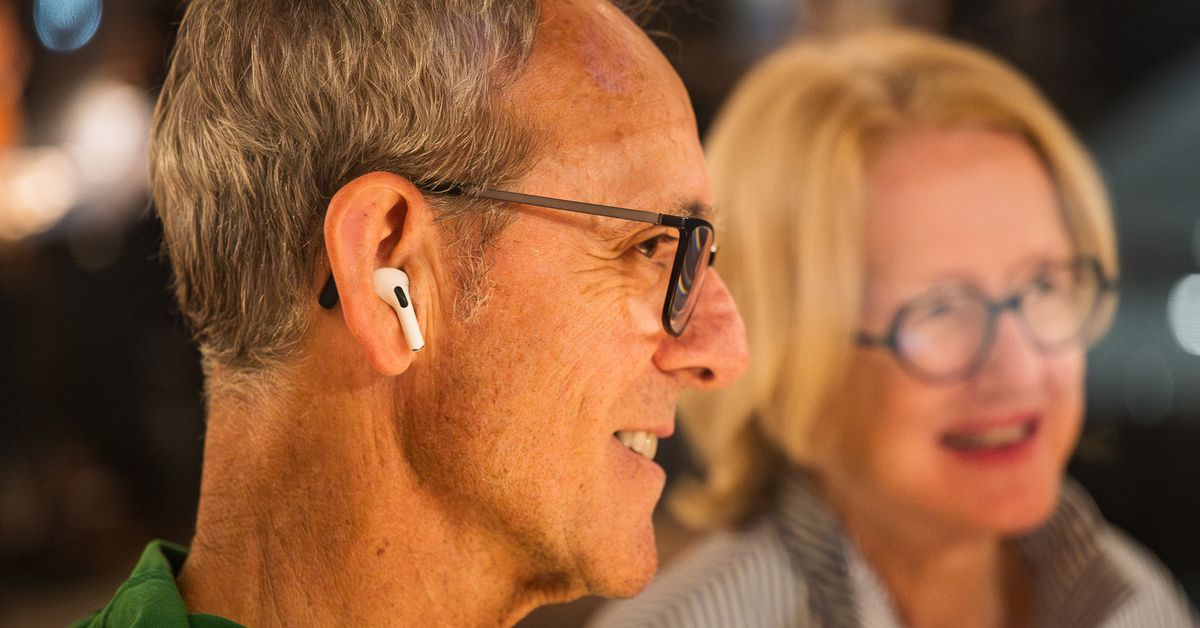
That also means we’re about to enter an era where we’ll need to get comfortable with people wearing earbuds at all times. There’s a perception that leaving your earbuds in while talking with other people is rude. Transparency mode in many of today’s earbuds sounds totally natural and lifelike, yet I still constantly remove my buds to show someone they’ve got my undivided attention. That way of thinking has to change when popular earbuds start pulling double duty as hearing aids. It’s a powerful way to reduce the stigma that’s all too common with hearing aids, but this shift will take time.
Over the last several days, I’ve been able to preview Apple’s hearing health features. At times, the experience has been emotionally intense. I’m someone who grew up with a Discman and iPod basically attached to my hip, and I’ve been to countless concerts over the decades. I also haven’t seen an audiologist since 2018 or so. That’s anything but unusual; Apple says 80 percent of adults in the US haven’t had their hearing checked in at least five years. Putting a test right on your iPhone is a surefire way to improve that trend.
Prevention: hearing protection
Did you know there are people who’ve already been replacing ear plugs with the AirPods Pro at concerts? Until this fall, Apple had never endorsed such a use case or advertised its earbuds as hearing protection devices. The company knew people were doing it, but kept quiet on the subject.
That’s now changed. With iOS 18.1 and the soon-to-be-released AirPods firmware update, the AirPods Pro 2 will offer hearing protection at all times across noise cancellation, transparency, and adaptive audio modes. There’s no “concert mode” or a specific setting to toggle. You can think of this as an expansion of the loud sound reduction option that was already in place. Hearing protection is on by default, and Apple says “an all-new multiband high dynamic range algorithm” helps to preserve the natural sound of concerts and other live events.
Which listening mode you’ll use for concerts comes down to personal preference. I’ve found adaptive audio works well since it lets you customize whether you prefer more noise cancellation or more passthrough. But even in full transparency mode, some level of hearing protection is active. The more noise cancellation that’s applied, the longer you can remain in relatively loud environments.
There are limits to what the AirPods Pro 2 can handle; Apple’s hearing protection isn’t cut out for extremely loud, sudden noises like gunfire, fireworks, or a jackhammer. Sustained noises over 110 dBa are also too much for the earbuds. Some clubs and concerts can definitely exceed that threshold, so be aware.
Awareness: the Apple hearing test
You’ll need a quiet space when taking Apple’s hearing test. Before getting started, your iPhone will do a quick analysis of ear tip fit and environmental noise to ensure you’re good to go. All of these hearing health features are calibrated for Apple’s stock silicone tips, so if you’re using aftermarket third-party tips (including foam), there’s no guarantee you’ll get the optimal experience. Once the test begins, you just tap the screen whenever you hear any of the three-beep tone sequences.
There are a few key things to know about Apple’s hearing test. For one, it’s designed so that you can’t predict or game it. The test can play any frequency at any time, so no two are the same. Apple tests your left ear first, and here’s something I wish I’d known going in: it’s completely normal to hear nothing at all for several seconds at a time. It was in those moments, when five, six, or even 10 seconds would pass by without an obvious tone sequence, where I’d start feeling pretty anxious.
My best advice is to avoid wondering if you should be hearing something at a given moment and instead just focus on the tones as they come. Some can be incredibly faint. There are visual cues that let you know the test is still moving along even during silence — the most obvious one being a large circle that animates onscreen throughout the process. (You’ll also notice a progress dial for each ear that fills as you take it.)
I took the test twice several days apart, and my results for both ears fall under “little to no hearing loss.” Having recently turned 40, I’ll take that. But I also learned that my left ear has definitely lost a bit more over the years than my right, which is something I’ve never noticed in daily life.
The slight difference between my two tests is exactly the margin that Apple expects for people who take it multiple times. Results are stored in the Health app, where you can export individual tests (or all of them) as a pdf. Here’s how one of mine charts out:
You can also import charts from tests you’ve taken with a hearing professional. This data is what’s used to configure the hearing aid feature.
Apple’s hearing test only takes around five minutes, but it felt like a long five minutes for me and everyone else I’ve let try it. Again, that’s probably because it’s been too long since many of us have done this. The second time wasn’t nearly as stressful. I can definitely see the hearing test having a viral moment on TikTok and other social media, which seems like a great thing for awareness all around. Hearing loss is incredibly common: 1.5 billion people around the world are living with some extent of it, according to the World Health Organization.
Assistance: AirPods as hearing aids
For those 18 years and older with mild to moderate hearing loss, the AirPods Pro 2 can now serve as a clinical-grade hearing aid. Once enabled, you can also toggle on a “Media Assist” setting that uses your hearing test results to optimize the sound of music, phone calls, and video content.
Within the settings menu, you can use sliders to fine tune the hearing aid feature’s amplification, tone, and balance. These options are also accessible via Control Center on an iPhone, iPad, or Mac. Much like you can slide a finger on the AirPods Pro 2 stem to adjust volume, you can use that same gesture to control amplification when the hearing aid mode is active. You can only use the hearing aid feature when in transparency mode. Apple’s instructions for the hearing aid feature advise that it takes time (in some cases weeks) for customers to get fully accustomed to the sound.
Being able to use Apple’s $250 earbuds as a hearing aid is a huge deal for those who can benefit from this capability. But they won’t be right for everyone. People with more severe hearing loss will still need to seek other solutions. And the main tradeoff with the AirPods Pro 2 is battery life: they can last for around six hours with the hearing aid engaged, which doesn’t match what you’ll get from many OTC and prescription hearing aids.
But this is a big milestone — and it seems inevitable that Samsung, Google, and other tech heavyweights will follow Apple’s lead fairly quickly. I’m all for that, even if it feels strange that hearing aid functionality has become the latest aspect of ecosystem lock-in. We spent a long time bemoaning the loss of the headphone jack. With advancements like this, and earbuds helping to improve quality of life for so many people, we’re finally starting to see a worthwhile payoff.
Photography by Chris Welch / The Verge
Technology
Microsoft’s new AI agents set to shake up enterprise software, sparking new battle with Salesforce
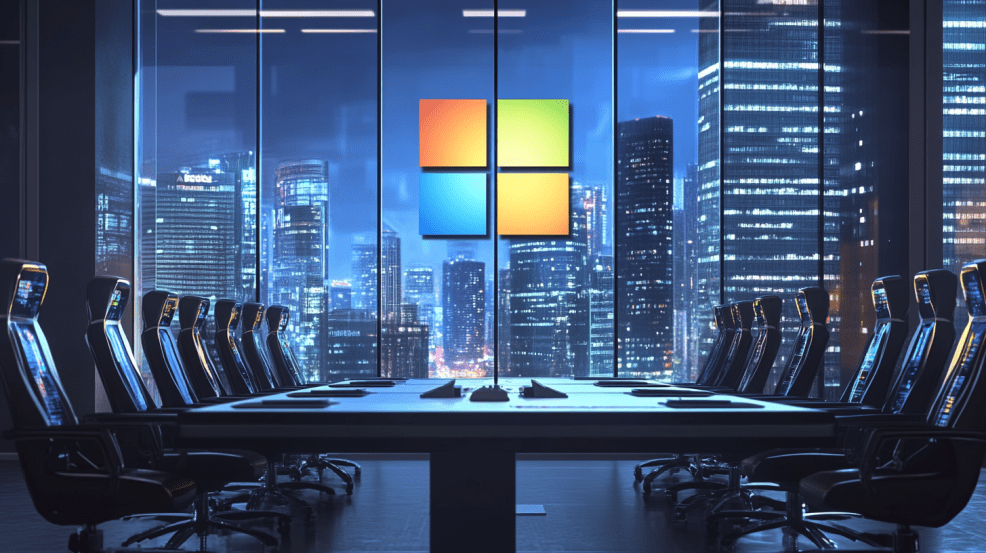
Join our daily and weekly newsletters for the latest updates and exclusive content on industry-leading AI coverage. Learn More
Microsoft just announced a suite of autonomous AI agents for its Dynamics 365 platform, intensifying the competition with Salesforce in the enterprise AI market. The tech giant will release ten new autonomous agents designed to augment sales, service, finance, and supply chain teams.
Available in public preview starting next month, these AI agents aim to automate complex tasks and orchestrate business processes across organizations. They surpass traditional chatbots and Microsoft’s earlier AI offerings by reasoning over intent and context, making judgments based on a broader set of data.
“We think of these agents as really the apps of the AI era,” said Bryan Goode, Corporate Vice President at Microsoft, in an interview with VentureBeat. “Every line of business system that exists today is going to get reimagined as an agent that sits on top of a copilot.”
AI titans clash: Microsoft’s counterpunch to Salesforce’s Agentforce
The move comes just weeks after Salesforce unveiled its Agentforce platform, which CEO Marc Benioff has been aggressively promoting while criticizing Microsoft’s Copilot. Benioff recently called Microsoft Copilot “more like Clippy 2.0,” referring to Microsoft’s much-maligned Office assistant from the 1990s.
Microsoft’s new offering appears to be a direct challenge to Salesforce’s Agentforce. While Salesforce’s platform relies on its Atlas reasoning engine, Microsoft’s agents are powered by advanced language models and the company’s vast troves of enterprise data.
Goode emphasized that these agents are not meant to replace human workers but to enhance their capabilities. “In many cases, these agents can actually enable people to add capabilities that they wouldn’t have otherwise been able to do,” he explained.
Battle for AI dominance: Microsoft and Salesforce lead the charge
The tech industry is witnessing a paradigm shift as AI agents move from experimental technology to core business tools. Microsoft and Salesforce are at the forefront, each leveraging their unique strengths to shape the future of enterprise software.
Microsoft’s strategy hinges on its ubiquitous presence in office productivity and cloud computing. By integrating AI agents with familiar tools like Microsoft 365 and Azure, the company aims to make AI adoption seamless for its vast user base. Salesforce, on the other hand, is banking on its CRM expertise and the power of its recently developed Data Cloud to create AI agents that understand and optimize customer relationships.
The success of these platforms could redefine the future of work and enterprise software. As AI agents become more sophisticated, they may blur the lines between human and machine tasks, potentially reshaping organizational structures and job roles.
However, challenges remain. Data privacy concerns, the need for transparent AI decision-making, and the potential for job displacement are issues both companies must navigate carefully. Their ability to address these concerns while delivering tangible business value will likely determine the pace and extent of AI agent adoption.
As this AI revolution unfolds, one thing is clear: the enterprise software landscape is on the cusp of a major transformation. Whether it’s Microsoft’s vision of “agents plus copilot plus humans” or Salesforce’s “human at the helm” approach, the future of work is being rewritten — one AI agent at a time.
Source link
Technology
ShoBizzy, a networking app for the TV industry, aims to open new doors for freelancers
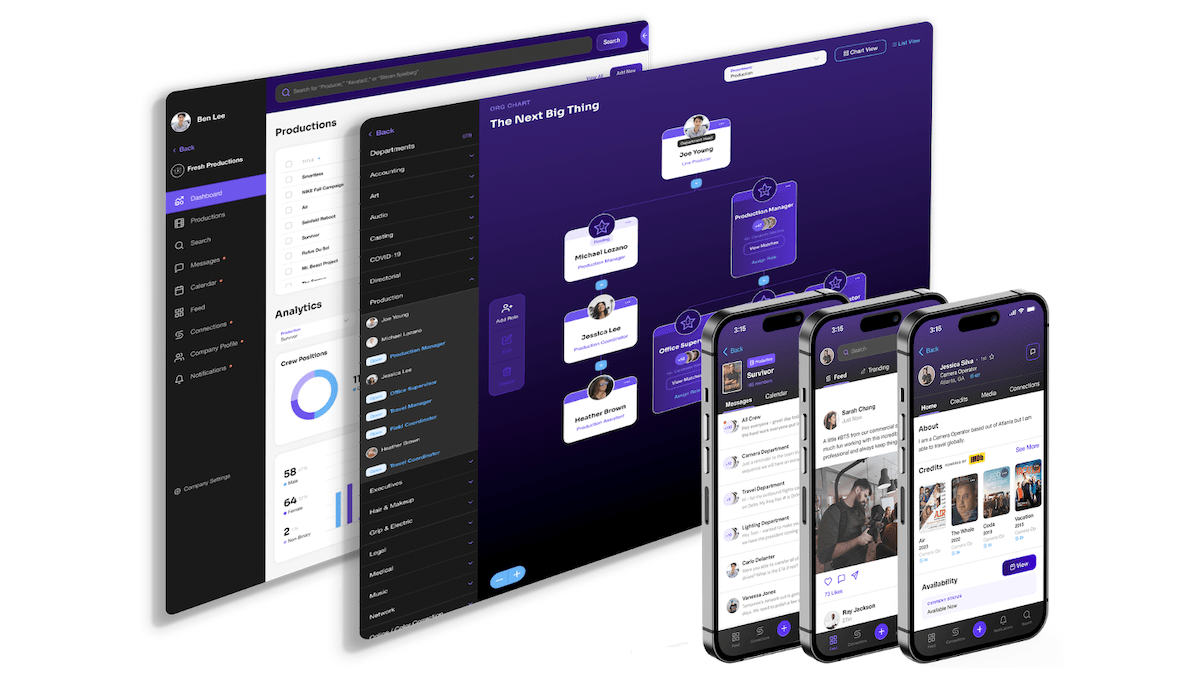
With the current unemployment crisis in Hollywood, many TV and film crew members are concerned about finding their next job. This is particularly the case for freelancers, who often face unstable work and irregular pay.
ShoBizzy is the latest professional networking app for the entertainment industry that aims to address this challenge. And, as more workers could be at risk of being out of a job, ShoBizzy recently expanded its offering to allow users to pursue opportunities in additional areas like live events and content creation.
Launched in January, the app sets itself apart from traditional job-post boards such as Backstage and StaffMeUp because it doesn’t require users to fill out applications. Instead, it provides a social platform for freelancers to create public profiles showcasing their skills and expertise, as well as form long-lasting connections with people in the business who can serve as valuable references for future job opportunities.
“Freelancers live a very non-traditional career path, in terms of the fact that we never have a permanent employer, and it ends up being that your network is the most valuable piece to your career because of the fact that it’s such a who-you-know business,” co-founder Doug Weitzbuch told TechCrunch. Weitzbuch is a freelance TV producer with 20 years of industry experience and has worked on shows like “Duck Dynasty,” “Hell’s Kitchen,” and “Lip Sync Battle.”

It’s a smart move to allow freelancers to broaden their horizons beyond TV and film, as there has been a lot of interest in the creator economy, which is estimated to be a $250 billion business. There has also been a surge in live events this past year. PwC predicts that live event revenue in the U.S. is set to reach $68.7 billion in 2024.
“The television industry has been in the downturn this past year, and a lot of people are struggling to find work,” co-founder Kevin Eberly said, who previously founded PayYourRent, the online rent payment software company. “As we’re building [ShoBizzy], we had a lot of interest from two tangential verticals. One is live event production, so things like concerts, tours, and festivals. And the other is digital content, you know, YouTube creators and stuff like that…We’re able to offer opportunities to freelance crew that they potentially never would have thought of on their own.”
Eberly added that the company currently has “strong relationships with multiple companies in the live event vertical, including Red Light Management, that are eager to bring the platform to their productions and clients.”
The new partnership with Red Light Management is significant because the company represents many well-known artists, such as Luke Bryan, Sabrina Carpenter, The Black Keys, The Fray, The Strokes, and Tom Petty. This potentially gives freelancers the chance to work on major projects that could help advance their careers.

Alongside the expansion, ShoBizzy added new functionality to help live event companies manage hires more easily. The app’s production workflow is now tailored to concert tours, allowing companies to add multiple dates and locations in a single production. It also lets companies match with any vendors they may need, such as camera rental vendors.
Overall, ShoBizzy’s suite of tools for production companies aims to streamline the hiring process. Using an AI-powered algorithm, the app suggests the best-fitting individuals for each role, considering factors such as the production’s location, current availability, and relevant IMDb credits. It then tracks the progress of hires in real time as the crew is assembled. Companies can also message crew members in the app.
Since its launch, ShoBizzy has grabbed the attention of 6,500 signups and around 650 companies, including A&E, Amazon, Disney+, Discovery Channel, Food Network, Netflix, Nike, and the WNBA, among others.
The company is currently raising a $2 million seed funding round.
Technology
News Corp sues Perplexity for ripping off WSJ and New York Post
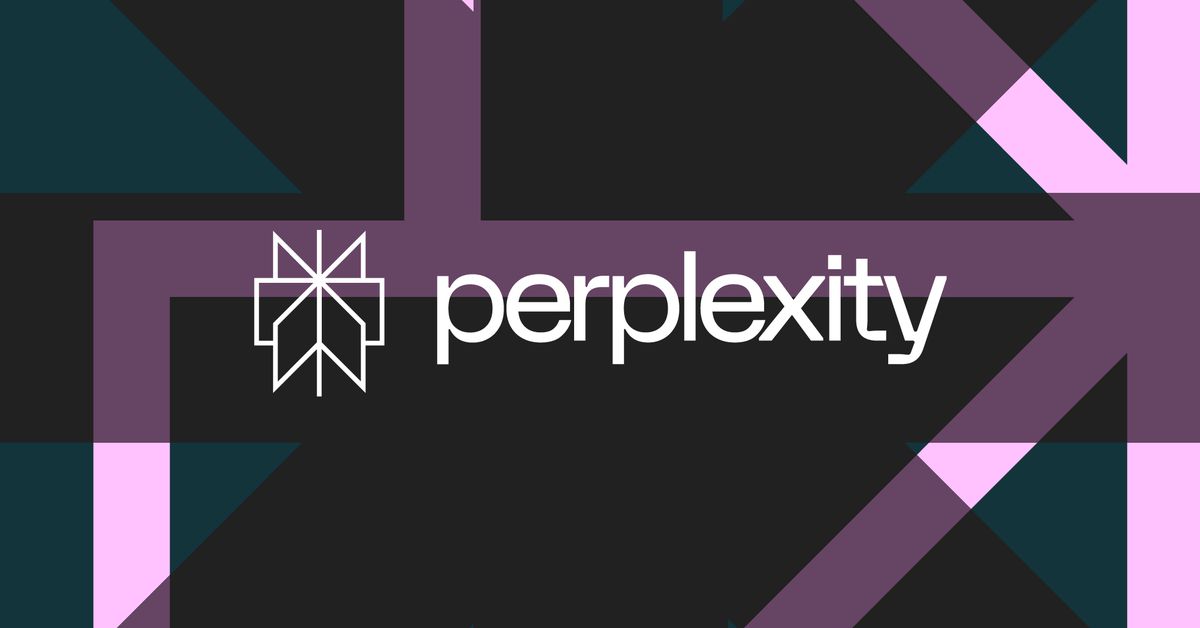
News Corp, the parent company of media outlets like The Wall Street Journal and the New York Post, is suing the AI search engine Perplexity for infringing copyrighted content. In a lawsuit filed on Monday, News Corp alleges Perplexity copies news articles, analyses, and opinions “on a massive scale.”
Perplexity is an AI startup that trains its AI search models using content from around the web, allowing it to respond to user queries with a summary of its sources. As outlined in the lawsuit, Perplexity bills itself as a platform that lets users “skip the links” to online articles, which News Corp alleges drives “customers and critical revenues away from those copyright holders.”
In addition to accusing Perplexity of reproducing some content “verbatim,” News Corp also claims Perplexity can falsely attribute facts and analysis to the company’s outlets, “sometimes citing an incorrect source, and other times simply inventing and attributing to Plaintiffs fabricated news stories.” The lawsuit claims News Corp sent a letter to Perplexity about its “unauthorized” use of its content in July, but Perplexity “did not bother to respond.”
News Corp is asking the court to force Perpelxity to stop using its content without permission and to destroy any database containing its works. The Verge reached out to Perplexity with a request for comment but didn’t immediately hear back.
“Perplexity perpetrates an abuse of intellectual property that harms journalists, writers, publishers and News Corp,” Robert Thomson, the CEO of News Corp, said in a statement. “The perplexing Perplexity has willfully copied copious amounts of copyrighted material without compensation, and shamelessly presents repurposed material as a direct substitute for the original source.”
Technology
First AMD EPYC 9965 benchmarks are in; Turin server CPU sets flurry of new world records across wide range of software, but will that be enough to stop Xeon and Arm’s forthcoming onslaught?
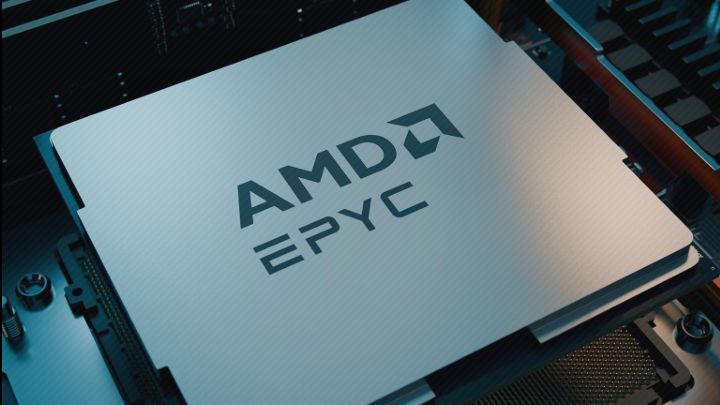
Intel recently launched its 128-core “Granite Rapids” Xeon 6900P processor family, finally offering some true competition to AMD’s EPYC 9004 Genoa/Bergamo server line.
The first reviews praised Intel’s new chips, with the overall consensus being that the 6900P range successfully heralded Intel’s long-awaited resurgence in the server CPU arena.
While Intel must have been pleased with the reception to its new processors, there was an elephant in the room. The Xeon 6900P processors were pitted up against aging rivals – Genoa is almost two years old now – and AMD had its 5th Gen EPYC “Turin” CPUs in the starting blocks.
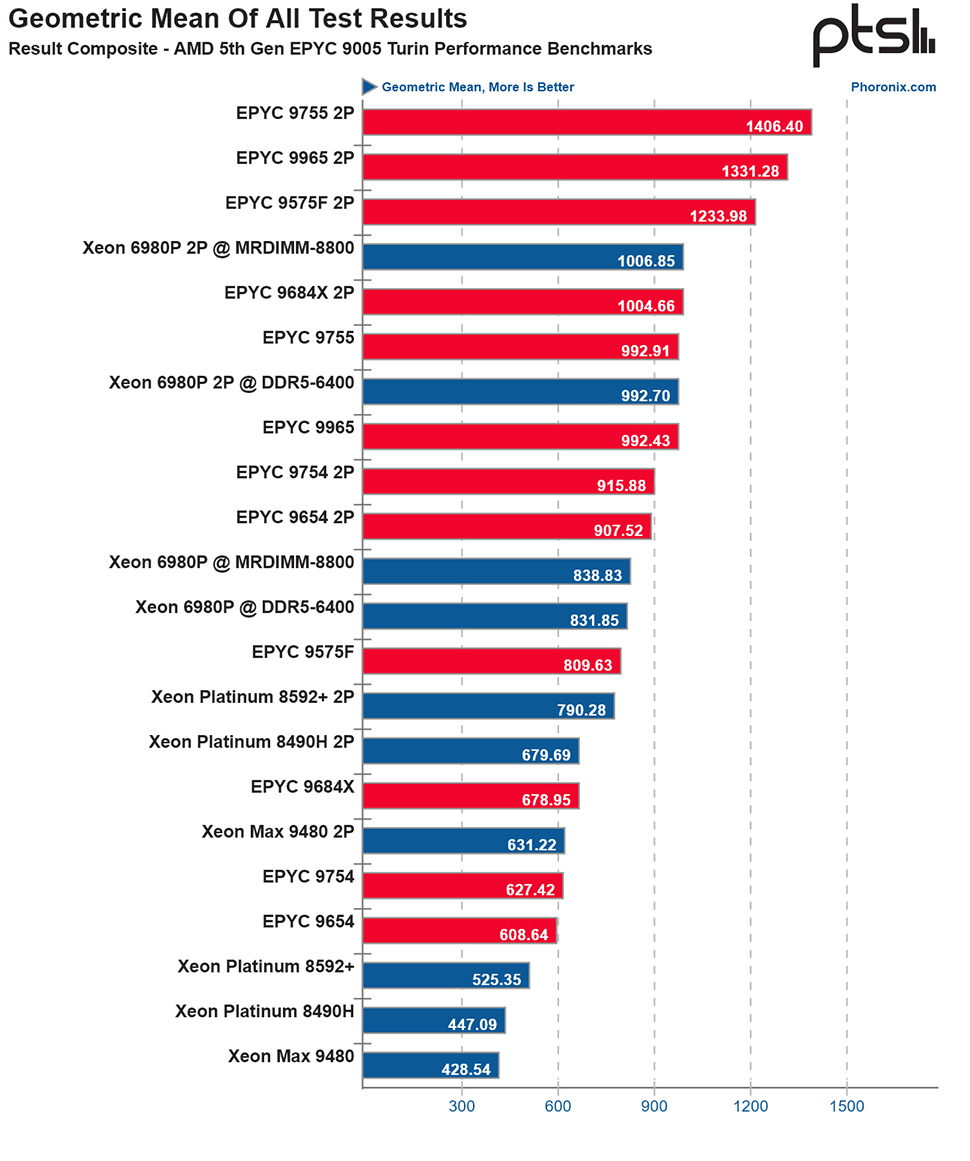
Not plain sailing
AMD’s new processors have now arrived and the first reviews for the EPYC 9575F, 9755, and 9965 Turin server CPUs are in. As was widely expected, these place AMD right back on top. As Phoronix notes in its review, “The new top-end AMD EPYC Turin processor performance can obliterate the competition in most workloads and delivers a great generational leap in performance and power efficiency.”
Phoronix added, “The tested AMD EPYC 9575F high-frequency Turin 64-core processor, EPYC 9755 128-core Turin processor, and EPYC 9965 192-core Turin Dense processors dominated across the wide variety of server, technical computing, and HPC workloads tested. The dual 128-core EPYC 9755 Turin processor was 40% faster than the dual Xeon 6980P Granite Rapids server with MRDIMMs. Even a single EPYC 9755 (and EPYC 9965) effectively matched the dual Xeon 6980P processors in this larger selection of benchmarks than what was initially run for Granite Rapids.”
In its glowing review, Storage Review said, “What sets the EPYC 9005 series apart is its ability to meet the diverse needs of modern enterprises with configurations that scale from entry-level, high-frequency models to super cache-dense chips to multi-core powerhouses. Whether real-time AI inferencing, computational fluid dynamics, large-scale data analytics, or high-resolution 3D rendering, the EPYC lineup delivers single-threaded responsiveness and multi-threaded efficiency. Advanced features like 12-channel DDR5 memory support, PCIe 5.0 lanes, and AMD’s secure, confidential computing make this series a performance upgrade and a comprehensive solution for data centers focused on the future.”
In its review, ServeTheHome said AMD EPYC 9005 Turin delivered a “transcendent” performance, noting that “AMD’s formula was simple: Increase TDP by 25%+, increase core counts by 50%, use new process technology, and update its server processors to Zen 5/ Zen 5c architecture.”
Although the site was hugely impressed by the new chips, STH’s Patrick Kennedy made an interesting observation. “In terms of competing directly with Intel for the top-end sockets vying for the top AI nodes, the situation is a bit more nuanced than one might think. At 192 cores, the Zen 5c-based AMD EPYC 9965 is great for throughput and excellent for virtualization and cloud workloads. Still, at 128 cores with the Intel Granite Rapids-AP versus 128 cores with the AMD EPYC 9755, AMD does not have the same outright leadership that it had before. Or better to say, AMD is no longer competing at the top-end just with itself.”
It isn’t only Intel that AMD has to worry about either. Arm is also challenging in the data center, and its impact in the future shouldn’t be overlooked.
More from TechRadar Pro
Technology
The iPhone 17 Pro could have a zoom feature that shames telescopes
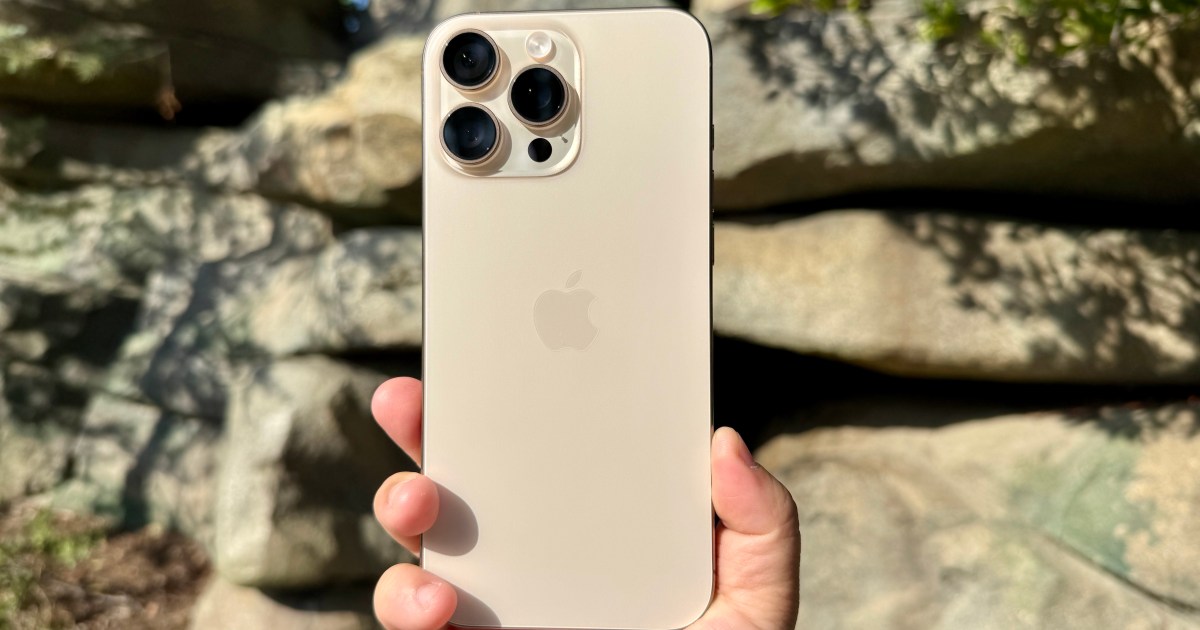
The iPhone 16 is barely out but we’ve already heard quite a few rumors about the iPhone 17. For one, we know it’s going to lack an iconic model. It’s highly likely Apple is discontinuing the Plus series, instead opting for a base iPhone 17, the iPhone 17 Pro, and the iPhone 17 Pro Max. There’s also a new, debut phone in the works that’s been called the iPhone 17 Air or the Slim — you get no prizes for guessing what its selling point will be.
There’s potentially a bigger upgrade coming, though. The iPhone 17 is rumored to have a much higher-resolution front camera than the iPhone 16 does. Currently, the iPhone 16 Pro and Pro Max both have a 12-megapixel front camera, but the iPhone 17 Pro might potentially double that with a 24MP front camera, according to tipster Jeff Pu and GSMArena.
In addition, the iPhone 17 Pro and Pro Max will receive a 48MP telephoto lens, giving them the ability to zoom in dramatically farther than the iPhone 16 Pro and Pro Max’s 12MP telephoto lens. The higher-tier models will also run on the A19 Pro chip, have 12GB of RAM, and a faster refresh rate for its display.

The estimated release date for the iPhone 17 is around September of next year, but this is based on the limited information we have and Apple’s history of launches. The phone isn’t “confirmed,” but we all know it’s coming. That said, this early in the development process, things could change significantly before release.
The iPhone 16 is a powerhouse of a device, especially with Apple Intelligence on the way. The iPhone 17 is likely to be even better as the team refines how to integrate Intelligence into your day-to-day phone use.
Technology
Trump’s new tariffs could increase tech prices, research suggests
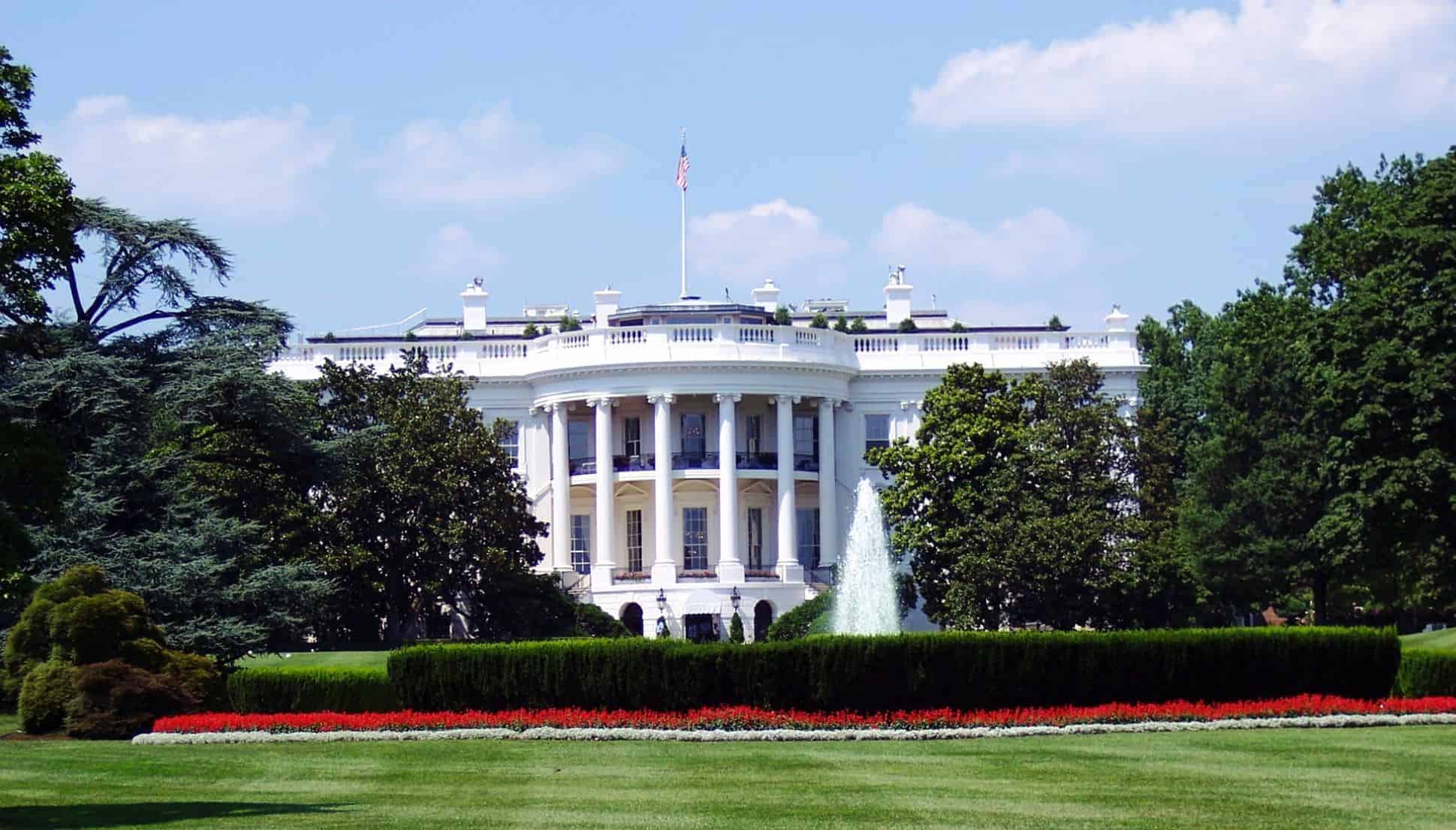
The US elections are getting closer and closer, and the candidates have already revealed many of their proposals. The potential measures in the economic sphere are raising special expectations due to the impact they could cause, not only in the country but worldwide. A new study has estimated how much the potential price increases in consumer electronics in the US would be after the tariffs proposed by Trump.
Trump aims to maintain a protectionist approach to the US economy
During his first term, Donald Trump implemented a protectionist economic policy. This involves trying to promote domestic production and consumption by imposing tariffs on foreign products or technologies. The Trump administration implemented the first severe economic restrictions against Huawei, thereby initiating a trade war against China. Then, the Biden administration continued along that path, even escalating the severity of the sanctions.
Looking ahead to a potential second term, we can expect Trump to follow the same line. In fact, the presidential candidate has already revealed some potential tariffs that he would implement on foreign technology. As in the first phase, they would be especially harsh on products from China. That said, the Consumer Technology Association (CTA) shared a report with estimates of the potential price increases on consumer electronics that Trump’s new tariffs would bring.
The potential price increases that Trump’s new tariffs would bring
The CTA’s research focuses mainly on two tariffs proposed by Trump. There’s a 10%–20% tariff on imports from all countries and a 60% tariff on imports from China. According to the report, these new tariffs would bring potential price increases of 46% on laptops and tablets, 40% on video game consoles, and 26% on smartphones.
The CTA bases the results of its research on the strong presence of Chinese technology in the US consumer market. This is especially noticeable in the PC hardware segment. The research also indicates that the 60% tariff on Chinese imports could potentially undermine Trump’s objectives. The CTA suggests that this will lead to big tech companies moving their production to other countries. Plus, potential price increases would impact public interest in buying new products.
-

 Science & Environment1 month ago
Science & Environment1 month agoHyperelastic gel is one of the stretchiest materials known to science
-

 Technology4 weeks ago
Technology4 weeks agoIs sharing your smartphone PIN part of a healthy relationship?
-

 Science & Environment1 month ago
Science & Environment1 month ago‘Running of the bulls’ festival crowds move like charged particles
-

 Science & Environment1 month ago
Science & Environment1 month agoHow to unsnarl a tangle of threads, according to physics
-

 Science & Environment1 month ago
Science & Environment1 month agoMaxwell’s demon charges quantum batteries inside of a quantum computer
-

 Technology1 month ago
Technology1 month agoWould-be reality TV contestants ‘not looking real’
-

 Science & Environment4 weeks ago
Science & Environment4 weeks agoX-rays reveal half-billion-year-old insect ancestor
-

 Science & Environment1 month ago
Science & Environment1 month agoSunlight-trapping device can generate temperatures over 1000°C
-

 Science & Environment1 month ago
Science & Environment1 month agoLiquid crystals could improve quantum communication devices
-

 Science & Environment1 month ago
Science & Environment1 month agoQuantum ‘supersolid’ matter stirred using magnets
-

 Womens Workouts4 weeks ago
Womens Workouts4 weeks ago3 Day Full Body Women’s Dumbbell Only Workout
-

 Science & Environment1 month ago
Science & Environment1 month agoWhy this is a golden age for life to thrive across the universe
-

 Science & Environment1 month ago
Science & Environment1 month agoLaser helps turn an electron into a coil of mass and charge
-

 TV3 weeks ago
TV3 weeks agoসারাদেশে দিনব্যাপী বৃষ্টির পূর্বাভাস; সমুদ্রবন্দরে ৩ নম্বর সংকেত | Weather Today | Jamuna TV
-

 Technology3 weeks ago
Technology3 weeks agoUkraine is using AI to manage the removal of Russian landmines
-

 Science & Environment1 month ago
Science & Environment1 month agoA new kind of experiment at the Large Hadron Collider could unravel quantum reality
-

 Science & Environment1 month ago
Science & Environment1 month agoQuantum forces used to automatically assemble tiny device
-

 Science & Environment1 month ago
Science & Environment1 month agoNerve fibres in the brain could generate quantum entanglement
-

 Science & Environment1 month ago
Science & Environment1 month agoHow to wrap your mind around the real multiverse
-

 Science & Environment1 month ago
Science & Environment1 month agoA slight curve helps rocks make the biggest splash
-

 Science & Environment1 month ago
Science & Environment1 month agoITER: Is the world’s biggest fusion experiment dead after new delay to 2035?
-
Business3 weeks ago
DoJ accuses Donald Trump of ‘private criminal effort’ to overturn 2020 election
-

 News2 weeks ago
News2 weeks agoMassive blasts in Beirut after renewed Israeli air strikes
-

 Business2 weeks ago
Business2 weeks agoWhen to tip and when not to tip
-
News1 month ago
the pick of new debut fiction
-

 News1 month ago
News1 month ago▶️ Hamas in the West Bank: Rising Support and Deadly Attacks You Might Not Know About
-

 Science & Environment1 month ago
Science & Environment1 month agoTime travel sci-fi novel is a rip-roaringly good thought experiment
-

 MMA3 weeks ago
MMA3 weeks agoJulianna Peña trashes Raquel Pennington’s behavior as champ
-

 Technology3 weeks ago
Technology3 weeks agoMicrophone made of atom-thick graphene could be used in smartphones
-

 News2 weeks ago
News2 weeks agoNavigating the News Void: Opportunities for Revitalization
-

 News1 month ago
News1 month ago▶️ Media Bias: How They Spin Attack on Hezbollah and Ignore the Reality
-

 Science & Environment1 month ago
Science & Environment1 month agoNuclear fusion experiment overcomes two key operating hurdles
-

 News4 weeks ago
News4 weeks agoOur millionaire neighbour blocks us from using public footpath & screams at us in street.. it’s like living in a WARZONE – WordupNews
-

 Technology4 weeks ago
Technology4 weeks agoWhy Machines Learn: A clever primer makes sense of what makes AI possible
-

 Science & Environment1 month ago
Science & Environment1 month agoPhysicists have worked out how to melt any material
-

 Football3 weeks ago
Football3 weeks agoRangers & Celtic ready for first SWPL derby showdown
-

 News2 weeks ago
News2 weeks ago▶ Hamas Spent $1B on Tunnels Instead of Investing in a Future for Gaza’s People
-

 MMA3 weeks ago
MMA3 weeks agoPereira vs. Rountree prediction: Champ chases legend status
-

 Technology3 weeks ago
Technology3 weeks agoSamsung Passkeys will work with Samsung’s smart home devices
-

 Sport3 weeks ago
Sport3 weeks agoBoxing: World champion Nick Ball set for Liverpool homecoming against Ronny Rios
-

 Sport3 weeks ago
Sport3 weeks agoWorld’s sexiest referee Claudia Romani shows off incredible figure in animal print bikini on South Beach
-

 Technology3 weeks ago
Technology3 weeks agoThis AI video generator can melt, crush, blow up, or turn anything into cake
-

 TV2 weeks ago
TV2 weeks agoLove Island star sparks feud rumours as one Islander is missing from glam girls’ night
-

 Sport2 weeks ago
Sport2 weeks agoCoco Gauff stages superb comeback to reach China Open final
-

 Sport2 weeks ago
Sport2 weeks agoWales fall to second loss of WXV against Italy
-

 News3 weeks ago
News3 weeks agoHeartbreaking end to search as body of influencer, 27, found after yacht party shipwreck on ‘Devil’s Throat’ coastline
-

 Sport3 weeks ago
Sport3 weeks agoSturm Graz: How Austrians ended Red Bull’s title dominance
-

 News2 weeks ago
News2 weeks agoFamily plans to honor hurricane victim using logs from fallen tree that killed him
-

 News2 weeks ago
News2 weeks agoHeavy strikes shake Beirut as Israel expands Lebanon campaign
-

 MMA2 weeks ago
MMA2 weeks ago‘Uncrowned queen’ Kayla Harrison tastes blood, wants UFC title run
-

 Science & Environment1 month ago
Science & Environment1 month agoPhysicists are grappling with their own reproducibility crisis
-

 Technology1 month ago
Technology1 month agoMeta has a major opportunity to win the AI hardware race
-

 TV3 weeks ago
TV3 weeks agoPhillip Schofield accidentally sets his camp on FIRE after using emergency radio to Channel 5 crew
-

 Technology3 weeks ago
Technology3 weeks agoTexas is suing TikTok for allegedly violating its new child privacy law
-

 MMA2 weeks ago
MMA2 weeks agoPereira vs. Rountree preview show live stream
-

 MMA3 weeks ago
MMA3 weeks agoDana White’s Contender Series 74 recap, analysis, winner grades
-

 Technology3 weeks ago
Technology3 weeks agoMusk faces SEC questions over X takeover
-
Business3 weeks ago
Eurosceptic Andrej Babiš eyes return to power in Czech Republic
-

 News1 month ago
News1 month agoYou’re a Hypocrite, And So Am I
-

 Sport1 month ago
Sport1 month agoJoshua vs Dubois: Chris Eubank Jr says ‘AJ’ could beat Tyson Fury and any other heavyweight in the world
-

 Science & Environment1 month ago
Science & Environment1 month agoA tale of two mysteries: ghostly neutrinos and the proton decay puzzle
-

 Technology3 weeks ago
Technology3 weeks agoArtificial flavours released by cooking aim to improve lab-grown meat
-
Business3 weeks ago
Bank of England warns of ‘future stress’ from hedge fund bets against US Treasuries
-

 MMA3 weeks ago
MMA3 weeks agoAlex Pereira faces ‘trap game’ vs. Khalil Rountree
-

 Technology3 weeks ago
Technology3 weeks agoAmazon’s Ring just doubled the price of its alarm monitoring service for grandfathered customers
-

 News3 weeks ago
News3 weeks agoGerman Car Company Declares Bankruptcy – 200 Employees Lose Their Jobs
-

 TV2 weeks ago
TV2 weeks agoMaayavi (මායාවී) | Episode 23 | 02nd October 2024 | Sirasa TV
-

 Technology2 weeks ago
Technology2 weeks agoPopular financial newsletter claims Roblox enables child sexual abuse
-

 Money2 weeks ago
Money2 weeks agoWhy thousands of pensioners WON’T see State Pension rise by full £460 next year
-

 Sport2 weeks ago
Sport2 weeks agoMan City ask for Premier League season to be DELAYED as Pep Guardiola escalates fixture pile-up row
-

 Business3 weeks ago
Business3 weeks agoChancellor Rachel Reeves says she needs to raise £20bn. How might she do it?
-

 Football3 weeks ago
Football3 weeks agoSimo Valakari: New St Johnstone boss says Scotland special in his heart
-

 News3 weeks ago
News3 weeks agoHungry customer left gobsmacked as two blokes riding giant HORSES stroll into local chip shop
-

 Money2 weeks ago
Money2 weeks agoWetherspoons issues update on closures – see the full list of five still at risk and 26 gone for good
-
Politics3 weeks ago
Rosie Duffield’s savage departure raises difficult questions for Keir Starmer. He’d be foolish to ignore them | Gaby Hinsliff
-

 News2 weeks ago
News2 weeks agoHull KR 10-8 Warrington Wolves – Robins reach first Super League Grand Final
-

 MMA2 weeks ago
MMA2 weeks agoUFC 307 preview show: Will Alex Pereira’s wild ride continue, or does Khalil Rountree shock the world?
-

 Technology2 weeks ago
Technology2 weeks agoHow to disable Google Assistant on your Pixel Watch 3
-

 Technology2 weeks ago
Technology2 weeks agoA very underrated horror movie sequel is streaming on Max
-

 Science & Environment1 month ago
Science & Environment1 month agoRethinking space and time could let us do away with dark matter
-

 Health & fitness1 month ago
Health & fitness1 month agoThe secret to a six pack – and how to keep your washboard abs in 2022
-

 Science & Environment1 month ago
Science & Environment1 month agoCaroline Ellison aims to duck prison sentence for role in FTX collapse
-
News1 month ago
The Project Censored Newsletter – May 2024
-

 Technology3 weeks ago
Technology3 weeks agoQuantum computers may work better when they ignore causality
-

 Technology3 weeks ago
Technology3 weeks agoUniversity examiners fail to spot ChatGPT answers in real-world test
-

 News1 month ago
News1 month agoNew investigation ordered into ‘doorstep murder’ of Alistair Wilson
-

 Football1 month ago
Football1 month agoMike Williamson: Carlisle United appoint MK Dons boss as head coach
-

 MMA3 weeks ago
MMA3 weeks agoConor McGregor challenges ‘woeful’ Belal Muhammad, tells Ilia Topuria it’s ‘on sight’
-

 Sport3 weeks ago
Sport3 weeks agoWatch UFC star deliver ‘one of the most brutal knockouts ever’ that left opponent laid spark out on the canvas
-

 Technology3 weeks ago
Technology3 weeks agoEpic Games CEO Tim Sweeney renews blast at ‘gatekeeper’ platform owners
-

 Science & Environment3 weeks ago
Science & Environment3 weeks agoMarkets watch for dangers of further escalation
-

 News3 weeks ago
News3 weeks agoDisguised Sunderland GP poisoned man in will row, court hears
-
Business3 weeks ago
Sterling slides after Bailey says BoE could be ‘a bit more aggressive’ on rates
-

 News3 weeks ago
News3 weeks ago‘Blacks for Trump’ and Pennsylvania progressives play for undecided voters
-

 Technology3 weeks ago
Technology3 weeks agoApple iPhone 16 Plus vs Samsung Galaxy S24+
-

 TV2 weeks ago
TV2 weeks agoThe Sopranos: ‘Annoyed’ cast member criticises their final scene in HBO show
-

 Technology2 weeks ago
Technology2 weeks agoUlefone Armor Pad 4 Ultra is now available, at a discount
-

 News2 weeks ago
News2 weeks agoReach CEO Jim Mullen: If government advertises with us, we’ll employ more reporters
-

 Technology2 weeks ago
Technology2 weeks agoThe best budget robot vacuums for 2024
-

 News2 weeks ago
News2 weeks agoBalancing India and China Is the Challenge for Sri Lanka’s Dissanayake

You must be logged in to post a comment Login